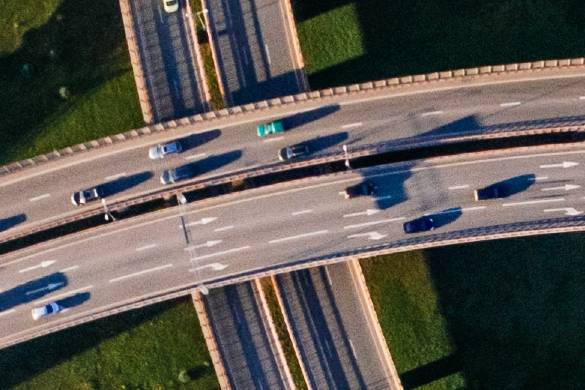
Marco Fontana, PhD student at the Distributed Algorithms CDT, introduces his latest research paper.
Summary
Distributed acoustic sensing (DAS) is a technology which turns an optical fibre into an array of sensing units. The high sensitivity, low cost and low-maintenance requirements make DAS an attractive solution for traffic monitoring, but its performance is highly affected by several environmental conditions. In this paper, we propose a new method to track each vehicle on a monitored highway by estimating the vehicle’s location based on the vibration it causes on the road. The method outperforms the standard approach, providing an improvement in the localisation accuracy and reducing the number of false alarms.
Importance of the research
DAS is an attractive solution for traffic monitoring compared to other sensors, i.e. cameras, inductive loops, radars and wireless sensors. The installation cost of DAS is lower compared to more traditional systems due to the ability to deploy the fibre in parallel with the road instead of above or under it and reuse existing telecommunication fibre as the sensing element of the system. Furthermore, DAS provides a spatial resolution of the order of meters without considerable infrastructure installed in or around the road, making the conventional traffic monitoring systems more expensive. Therefore, this technology is particularly useful in emerging countries with extensive road networks and no traffic monitoring system in place at the moment.
The vehicle trajectories usually appear as straight lines in the data, making line detection methods a natural approach to estimating the trajectory parameters. Nevertheless, the quality of the estimations with these methods is limited due to the noise in the data, which requires more sophisticated techniques to deal with complex situations and high-traffic scenarios. In this paper, we propose a method derived from harmonic analysis techniques, which iteratively detects and removes the contribution of the trajectory in the data. This approach allows us to detect closely spaced lines related to vehicles running next to each other on the road. The proposed method has been tested both on a synthetic and a real-world dataset, demonstrating remarkable performance even in high-noise scenarios.
What comes next
More investigation is needed to increase the sensitivity of the system in harsh conditions, where weak trajectories may be difficult to detect. Furthermore, a more advanced model would be beneficial to detect occluded vehicles, especially in high-traffic scenarios. Finally, real-time monitoring requires new considerations to speed up the current algorithm during peak times.
Authors: Marco Fontana, Ángel F. García-Fernández, Simon Maskell
If you would like to read this paper in full, please revisit this article late July to view on IEEE Explore.
This article belongs to the CDT's Fusion 2022 series. Please review our other Fusion conference paper overviews.